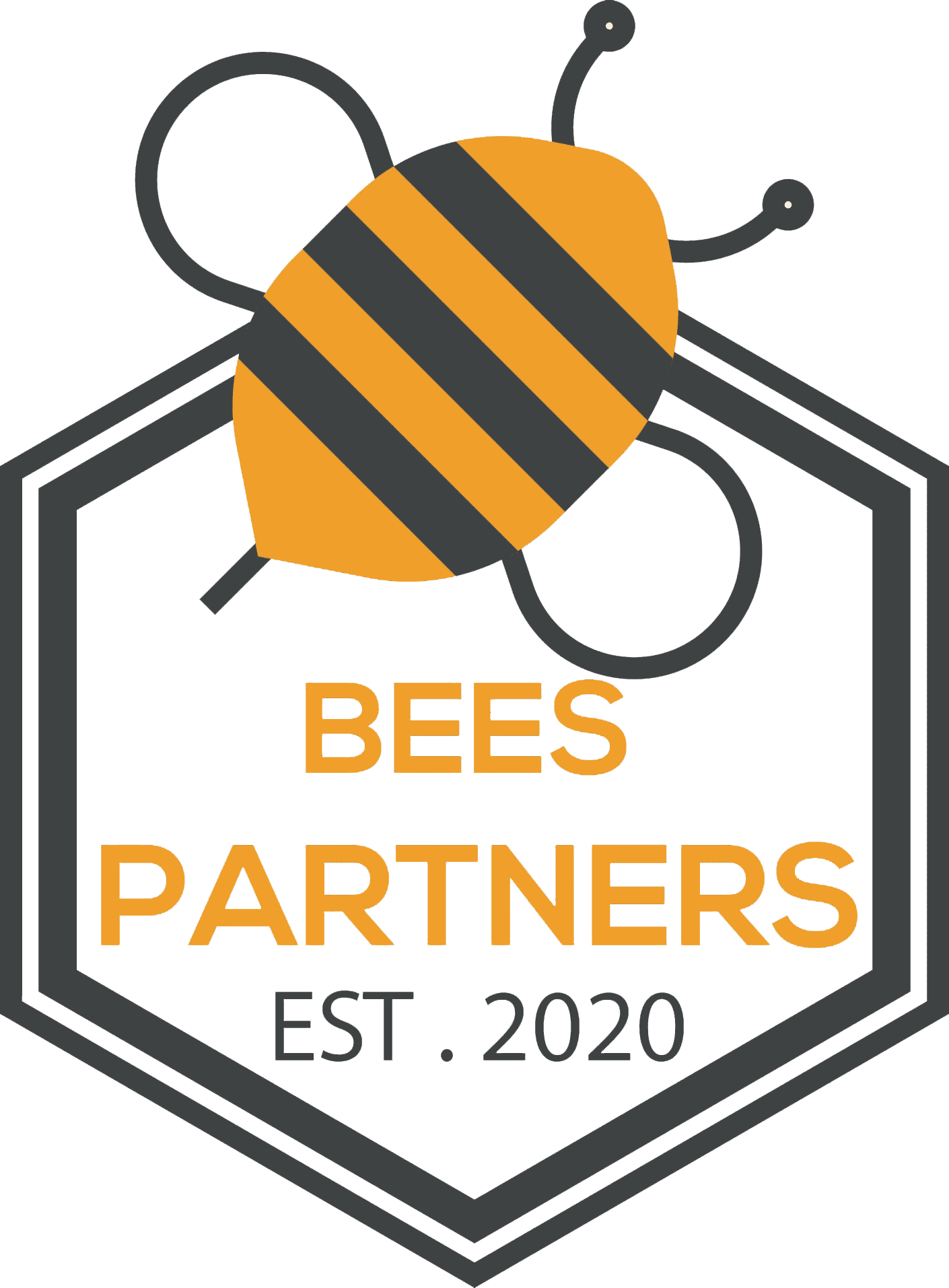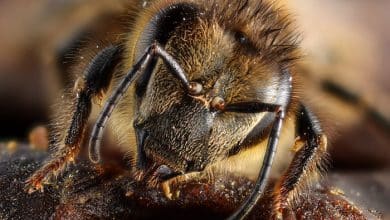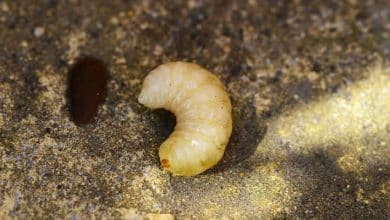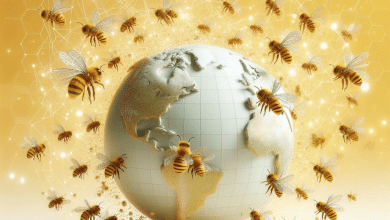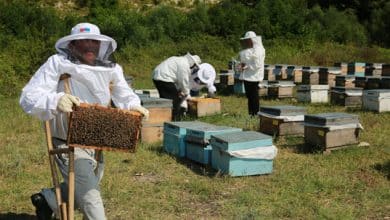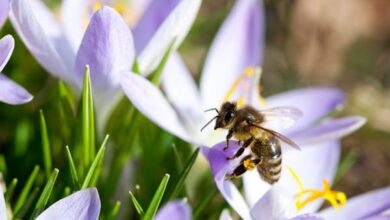raising honey bees
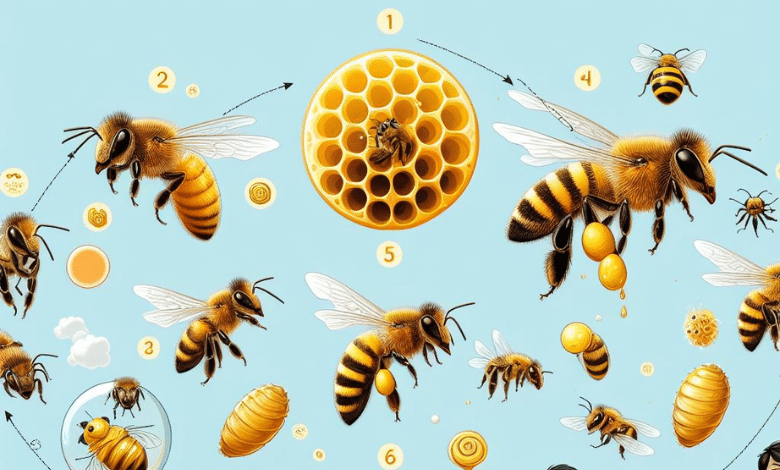
Raising honey bees is an enjoyable and rewarding hobby that has gained popularity in recent years. Honey bees play a vital role in pollinating crops and producing honey, making them an important part of our ecosystem. This guide will provide you with the basic information and knowledge needed to get started with beekeeping.
Honey bees are social insects that live in colonies and are known for their hive structure, which consists of worker bees, drones, and a queen. They are excellent pollinators and play a crucial role in the reproduction of plants. Additionally, honey bees produce honey, beeswax, propolis, and royal jelly, which have various uses in food, cosmetics, and medicine.
Why choose to raise honey bees? Aside from the benefits to the environment, beekeeping can also provide you with a source of fresh honey and other bee products for personal use or even for sale. Beekeeping is a fascinating and educational experience that can deepen your appreciation for the natural world and the intricacies of bee behavior.
By setting up a beehive and properly managing it, you can create a safe and healthy environment for your honey bees. Maintaining the hive, providing proper nutrition, and regular inspections are essential for the well-being of the bees and the success of your beekeeping venture. With the right equipment, tools, and knowledge, you can enjoy the beauty of raising honey bees and reap the sweet rewards they offer.
Basic information about honey bees
Honey bees, scientifically known as Apis mellifera, are social insects that live in colonies and play a vital role in our ecosystem. They are known for their hive structure, which consists of worker bees, drones, and a queen. Each bee has a specific role within the colony. Worker bees are females that perform tasks such as foraging for pollen and nectar, cleaning the hive, and caring for the brood. Drones are male bees whose sole purpose is to mate with the queen. The queen is the reproductive female and is responsible for laying eggs and maintaining the stability of the colony.
Honey bees are excellent pollinators and play a crucial role in the reproduction of plants. They collect pollen and nectar from flowers, transferring pollen grains from the male parts of a flower to the female parts. This process allows for fertilization and the production of seeds and fruits. Without honey bees, many plants would not be able to reproduce.
In addition to their pollination services, honey bees produce honey, beeswax, propolis, and royal jelly. Honey is a natural sweetener that humans have enjoyed for centuries. Beeswax is used in various products, such as candles, soaps, and cosmetics. Propolis is a resinous substance bees collect from plants and use to seal cracks and disinfect their hive. Royal jelly is a nutrient-rich substance secreted by worker bees and fed to the queen and developing larvae.
Overall, raising honey bees are fascinating and important creatures that contribute greatly to our environment and provide us with valuable products. Understanding the basic information about honey bees is essential for anyone interested in raising them or appreciating their role in the natural world.
Why choose to raise honey bees
Raising honey bees can be a rewarding and fulfilling experience for various reasons. Here are some compelling reasons why individuals choose to embark on the journey of beekeeping:
- Conservation and helping the environment: Honey bees play a crucial role in pollinating plants, which helps in the reproduction of many fruit and vegetable crops. By raising honey bees, you contribute to the conservation of these important pollinators and help maintain a healthy ecosystem.
- Sustainable honey production: Honey produced by your own bees is not only delicious but also a natural and sustainable sweetener. By raising honey bees, you have the opportunity to enjoy the taste of fresh, raw honey while supporting your local ecosystem.
- Connection with nature: Beekeeping allows you to connect with nature on a deeper level. Observing the behavior and intricate workings of a honey bee colony can be a fascinating and educational experience. You gain a greater appreciation for the interdependence between humans and the natural world.
- Personal fulfillment and hobby: Beekeeping can be a fulfilling and satisfying hobby. It provides a sense of accomplishment and purpose as you care for and nurture your bees. It also offers an opportunity to learn new skills and meet like-minded individuals in beekeeping communities.
- Educational value: Raising honey bees provides an excellent educational opportunity for both children and adults. It teaches valuable lessons about biology, ecology, and environmental stewardship. It also fosters a sense of responsibility and empathy towards the natural world.
Choosing to raise honey bees is a commitment, but the benefits far outweigh the efforts involved. Whether you’re interested in sustainable honey production, environmental conservation, or simply enjoy being in tune with nature, beekeeping can be a fulfilling and rewarding endeavor.
Getting Started with Raising Honey Bees
Getting started with raising honey bees is an exciting journey that requires proper preparation and knowledge. Here are some essential steps to help you get started on your beekeeping adventure:
- Setting up a beehive: Before bringing home your bees raising honey bees, you need to set up a beehive. Choose an ideal location that provides adequate sunlight and protection from extreme weather conditions. Ensure that the hive is at least two feet off the ground to keep it safe from critters and pests.
- Purchasing honey bees and installing them in the hive: Once your beehive is ready, you can purchase a package of bees or a nucleus colony from a reputable bee supplier. Carefully install the bees in the hive, following the instructions provided by the supplier.
- Beekeeping Equipment and Tools: To effectively care for your bees, you will need essential beekeeping equipment, such as a bee suit, gloves, smoker, hive tool, and a bee brush. These tools will help you safely handle the bees and maintain the hive.
- Beekeeping Practices and Care: Regularly inspect and manage the beehive to ensure the health and productivity of your bees. Conduct hive inspections to check for signs of disease, pests, and the overall well-being of the colony. Provide proper nutrition and water sources for your bees to thrive.
By following these steps and continuously educating yourself about beekeeping practices, you will be on your way to successfully raising honey bees. Remember to always follow local laws and regulations regarding beekeeping to ensure both your safety and the well-being of the bees.
Setting up a beehive
Setting up a beehive is the first crucial step in raising honey bees. The beehive provides a safe and suitable living environment for the bees to thrive and produce honey. Here are the key steps to set up a beehive:
- Location: Choose an ideal location for your beehive. It should have adequate sunlight and be protected from extreme weather conditions. Ensure that the hive is at least two feet off the ground to protect it from critters and pests.
- Hive Components: The beehive consists of several components, including the bottom board, deep boxes (also known as brood boxes), frames, and covers. Assemble these components according to the manufacturer’s instructions.
- Frames and Foundation: Install frames with wax foundation in the deep boxes. The wax foundation provides a base for the bees to build their honeycomb.
- Installing Bees: Once your hive is ready, it’s time to introduce the bees. You can purchase bees in packages or nucleus colonies from reputable suppliers. Follow the instructions provided by the supplier to properly install the bees in the hive.
- Feeding: Initially, feed the bees a 2:1 sugar-water solution to help them establish their colony. Place a feeder jar with small holes in the lid inside the hive to provide the bees access to the liquid.
- Hive Protection: To protect the hive, use an entrance reducer to prevent intruders and to regulate the hive temperature. Additionally, consider placing a mouse guard during cooler months.
Remember to regularly inspect and maintain the beehive to ensure the health and productivity of the bees. Stay vigilant for signs of disease or pest infestations and take appropriate measures to address them. With proper setup and care, your beehive will provide a thriving home for your honey bees.
Purchasing honey bees and installing them in the hive
Once the beehive is set up and ready, the next step in raising honey bees is to purchase the bees and install them in the hive. There are two main ways to obtain honey bees: purchasing them or catching a swarm. For beginners, purchasing a package of bees is recommended as it is more straightforward and ensures the establishment of a strong colony.
When purchasing raising honey bees, it is important to find a reputable supplier. Local beekeeping associations are a great resource for finding reputable bee suppliers in the area. Bees can be obtained as either a package or a nucleus colony (nuc). Packages consist of a queen bee and a specific number of worker bees, while nucs come with a queen bee, worker bees, brood, and honeycomb.
Packages and nucs can be pre-ordered in the winter, as they tend to sell out quickly. It is crucial to place your order well in advance to secure the bees for the upcoming beekeeping season. Once the bees arrive, it is essential to install them in the hive promptly to ensure their well-being.
To install the bees in the hive, follow the instructions provided by the supplier. It usually involves gently shaking the bees into the hive or releasing them near the entrance. It is important to handle the bees with care and avoid any sudden movements that may agitate them.
After installing the bees, it is recommended to feed them a sugar-water solution to help them establish their colony. This can be done by placing a feeder jar with small holes in the lid inside the hive to provide the bees access to the liquid.
By purchasing and installing honey bees in the hive properly, beekeepers can ensure the start of a thriving colony and begin their journey in beekeeping.
Beekeeping Equipment and Tools
Beekeeping Equipment and Tools:
In order to successfully raise honey bees, it is important to have the right equipment and tools. Here are some essential items that every beekeeper should have:
- Bee Hive with frames: The beehive is the home for your raising honey bees, and it is important to choose a hive that suits your needs. There are different styles of beehives available, such as Langstroth, Top Bar, and Warre hives. Additionally, frames are used to hold the honeycomb and provide structure to the hive.
- Hive Smoker: A hive smoker is used to calm the bees before working in the hive. By puffing cool smoke into the hive, it temporarily disrupts the bees’ communication and reduces aggression.
- Hive Tool: A hive tool is a versatile tool that is used to pry apart the hive components, scrape off propolis, and remove frames for inspection.
- Frame Lifter/Holder/Gripper: This tool helps in lifting and holding frames without damaging them. It provides a stable grip and ensures easy removal and insertion of frames.
- Bee Brush: A bee brush has soft bristles that are used to gently brush the bees off the frames or other surfaces without harming them.
- Beekeeping Tool Box: It is essential to have a dedicated tool box or container to keep all your beekeeping tools organized and easily accessible.
While the above-mentioned tools are essential, there are also other optional tools such as protective clothing like veils, gloves, and suits, queen rearing tools, honey extraction equipment, and more, depending on your beekeeping goals and preferences.
Having the right equipment and tools not only makes beekeeping easier but also ensures the safety of both the beekeeper and the bees. It is important to invest in high-quality equipment that is durable and designed specifically for beekeeping.
Essential beekeeping equipment
When it comes to beekeeping, having the right equipment is crucial for the success and safety of both the beekeeper and the bees. Here are some essential beekeeping tools that every beginner should have:
- Hive Tool: A hive tool is a must-have for any beekeeper. It is a small steel pry-bar that helps in prying apart hive components, scraping off propolis, and removing frames for inspection.
- Smoker: A smoker is another important tool to have. It calms the bees by puffing cool smoke into the hive, reducing their aggression and allowing the beekeeper to work more comfortably.
- Cap and Veil: Beekeeping can sometimes lead to stings, especially on the face and neck. Wearing a cap and veil provides essential protection from bee stings while still allowing the beekeeper to clearly see and handle the raising honey bees.
- Suit: While not essential, wearing a beekeeping suit offers full-body protection from bee stings. It includes a jacket, pants, and gloves, providing an added layer of safety during hive inspections and honey extraction.
In addition to these tools, beekeepers can also consider investing in other useful equipment like a bee brush for gently brushing bees off frames, a frame lifter/holder for easier frame manipulation, and a beekeeping tool box to keep all the tools organized and easily accessible.
Investing in high-quality beekeeping equipment ensures that the beekeeper can effectively and safely manage the hive while also promoting the overall health and productivity of the raising honey bees.
Useful tools for hive management and honey extraction
When it comes to hive management and honey extraction, having the right tools is essential for beekeepers. These tools not only make the tasks easier but also help ensure the safety of both the beekeeper and the bees. Here are some useful tools for hive management and honey extraction:
- Frame Lifter/Holder: A frame lifter/holder is a tool that makes it easier to lift and manipulate frames within the hive. It provides a secure grip, reducing the risk of dropping or damaging the frames during inspections or honey extraction.
- Bee Brush: A bee brush is a gentle tool used to brush bees off frames and surfaces. It helps in removing excess bees before inspecting or harvesting honey, reducing the chances of bee stings and minimizing disruption to the hive.
- Extracting Equipment: Extracting honey from the frames requires specialized equipment such as honey extractors, uncapping knives, and filters. Honey extractors allow beekeepers to spin the frames and extract honey through centrifugal force, while uncapping knives are used to remove beeswax caps from honey-filled cells.
- Honey Bucket: A honey bucket is a food-grade container used to collect and store honey after extraction. It should have a tight-fitting lid to prevent contamination and ensure the honey remains fresh.
- Hive Tool: A hive tool is a versatile tool that is useful for various tasks, including prying apart hive components, scraping off propolis, and removing frames for inspection. It is an essential tool for any beekeeper.
Investing in these tools will make hive management and honey extraction much more efficient and effective. They will not only simplify the process but also contribute to the overall health and productivity of the honeybees.
Beekeeping Practices and Care
Beekeeping Practices and Care:
Beekeeping requires regular practices and careful attention to ensure the health and well-being of raising honey bees. Here are some essential practices and care tips for successful beekeeping:
- Beehive management and inspections: Regular inspections of the hive are crucial to monitor the health and productivity of the colony. During inspections, beekeepers should check for signs of disease, pests, or queenlessness. It is also important to ensure that the hive has enough space for the bees to thrive and store honey.
- Providing proper nutrition and health care for honey bees: raising honey bees need a balanced diet to stay healthy and productive. Beekeepers should ensure a diverse source of nectar and pollen by planting bee-friendly flowers and providing supplemental feeding during lean periods. Additionally, managing pests and diseases through preventative measures and, if necessary, using organic treatments is crucial for maintaining hive health.
- Swarm prevention and management: Bees have a natural tendency to swarm when the colony becomes overcrowded. Beekeepers need to take preventive measures, such as providing enough space within the hive and monitoring colony expansion. If a swarm occurs, beekeepers can manage it by capturing the swarm and transferring it to a new hive.
- Queen bee management: The queen bee plays a vital role in the colony’s success. Beekeepers should monitor the queen’s health, ensure she has enough space to lay eggs, and replace her if necessary. Regularly introducing new queens can help maintain the vigor and productivity of the colony.
- Environmental considerations: Beekeepers should be mindful of the surrounding environment and take steps to protect their bees from pesticides, herbicides, and other chemical contaminants. Providing a clean water source and promoting biodiversity in the area can contribute to the overall well-being of the bees.
By implementing these practices and providing the necessary care, beekeepers can ensure the health and productivity of their honey bee colonies. It is important to continue learning and staying up-to-date with best practices in beekeeping to achieve continued success.
Beehive management and inspections
Beehive management and inspections are essential practices for the successful raising of raising honey bees. Regular inspections of the hive are crucial to monitor the health and productivity of the colony. During these inspections, beekeepers should carefully observe the bees and the condition of the hive to ensure that everything is functioning properly.
Inspecting the hive allows beekeepers to check for signs of disease, pests, or queenlessness. Early detection of any issues can help prevent the spread of diseases or infestation and allow for appropriate intervention. It is also important to ensure that the hive has enough space for the bees to thrive and store honey. If the hive becomes overcrowded, the bees may swarm, which can lead to a loss of the colony.
In addition to routine inspections, beekeepers should also practice proper beehive management. This includes providing adequate ventilation, regularly cleaning the hive, and keeping the hive free from debris and pests. Beekeepers should also regularly monitor the honey production and ensure that the bees have enough food supply.
By conducting regular inspections and implementing proper beehive management practices, beekeepers can identify and address any issues promptly, ensuring the health and productivity of the honey bee colony. It is important to stay vigilant and attentive to the needs of the bees to maintain a thriving hive.
Providing proper nutrition and health care for honey bees
Proper nutrition is crucial for the health and productivity of honey bee colonies. raising honey bees require a diverse and balanced diet to support their growth, development, and overall well-being. While nectar and pollen are the primary sources of nutrition for bees, beekeepers can supplement their diet with sugar syrup or pollen substitutes when natural forage is limited.
To provide bees with proper nutrition, beekeepers should ensure that their hives are located in areas with abundant flowering plants. This will allow bees to gather nectar and pollen from a variety of sources, providing them with the necessary nutrients. It is also important to avoid the use of pesticides near the hives, as these can contaminate the bees’ food sources and harm their health.
Regular health care practices are also essential for maintaining strong and productive honey bee colonies. Beekeepers should regularly inspect the hives to check for signs of disease or pest infestations. If any issues are detected, appropriate measures should be taken to prevent the spread of disease and protect the bees.
Additionally, beekeepers should monitor the overall health and behavior of the bees. Signs of stress or weakness, such as decreased foraging activity or dwindling population, should be addressed promptly. Providing a clean and well-ventilated hive, as well as controlling for pests like Varroa mites, can help maintain the health of the colony.
By providing proper nutrition and proactive health care, beekeepers can ensure the vitality and longevity of their honey bee colonies. Healthy bees are more resilient to environmental stressors and have a higher potential for honey production, contributing to the overall success of the beekeeping operation.
Harvesting Honey and Other Bee Products
Once your raising honey bees have built up their population and established a strong hive, it’s time to harvest the fruits of their labor. Harvesting honey is an exciting and rewarding process that allows you to enjoy the delicious and natural sweetness of honey. However, it’s essential to approach the task with care and respect for your bees.
When it comes to honey extraction, timing is crucial. It’s essential to wait until the bees have capped the honeycomb cells with wax. Capping indicates that the honey is mature and ready for harvest. Using a beekeeping tool called a honey extractor, you can gently remove the frames from the hive and extract the honey without damaging the comb. After extraction, the honey needs to be strained to remove any impurities or wax particles before it is ready for consumption or bottling.
In addition to honey, beekeeping allows you to explore other valuable bee products. Beeswax, known for its versatile uses, can be harvested by scraping it off the frames and melting it down. Beeswax can be used for candle making, skincare products, and even as a natural wood finish. Another valuable product is propolis, a sticky resin that bees collect from tree sap. Propolis has antimicrobial properties and can be collected from the hive for medicinal or cosmetic purposes.
By harvesting honey and other bee products, you can not only enjoy the fruits of your bees’ labor but also explore the many uses and benefits of these natural substances. Just remember to always prioritize the welfare of your bees and follow proper techniques and guidelines for harvesting.
Tips for honey extraction and processing
Here are some useful tips to ensure a smooth and successful honey extraction and processing process:
- Timing is key: Harvest honey when the frames are fully capped with wax. This indicates that the honey is mature and ready for extraction.
- Plan your equipment: Make sure you have all the necessary tools and equipment ready before starting the extraction process. This includes an uncapping knife or heated knife, a bee brush, an extractor, a strainer or cheesecloth, and storage containers for the honey.
- Work in a controlled environment: Choose a clean and dry area for extracting honey to prevent contamination. Maintain proper hygiene by wearing gloves and using clean equipment throughout the process.
- Uncapping the frames: Use an uncapping knife or scraper to remove the wax cappings from the honeycomb cells. Make sure to do this carefully to avoid damaging the comb.
- Extraction methods: Depending on the size of your operation, you can choose between manual extraction methods or using a mechanical honey extractor. Follow the manufacturer’s instructions for your specific extractor.
- Filtering and bottling: After extraction, strain the honey with a fine mesh strainer or cheesecloth to remove any impurities or wax particles. Let the honey settle for a few days to remove any air bubbles and then transfer it into clean, sterilized jars or bottles for storage.
- Label and store: Don’t forget to label your honey jars with the harvest date and any other relevant information. Store the honey in a cool and dry place away from direct sunlight.
By following these tips, you can ensure that your honey extraction and processing process is efficient and yields high-quality honey for your enjoyment or for sale.
Exploring other bee products like beeswax and propolis
Exploring other bee products like beeswax and propolis can expand the variety of products you can offer as a beekeeper. Beeswax is a versatile substance produced by raising honey bees and has a wide range of applications. It is commonly used in the production of candles, balms, soaps, and cosmetics. Beeswax can also be used in woodworking, leatherworking, and even as a food preservative. Its natural properties make it a popular choice among eco-conscious consumers.
Propolis, on the other hand, is a sticky resin collected by bees from buds and used as a glue in the hive. It has been valued for its medicinal properties for centuries. Propolis is known for its antibacterial, antifungal, and antioxidant properties, making it a sought-after ingredient in natural remedies and health products. It can be used in skincare products, throat sprays, and dietary supplements.
When exploring these bee products, it is important to ensure sustainable harvesting practices that prioritize the well-being of the raising honey bees. This includes leaving enough beeswax and propolis for the colony’s needs and only collecting excess amounts.
By diversifying your product offerings with beeswax and propolis, you can tap into niche markets and offer unique, natural alternatives to your customers. However, it is essential to research and comply with any regulations or requirements for selling these products in your area. Always communicate the benefits and uses of these products to educate consumers and enhance their appreciation for the wonders of the beekeeping world.
Troubleshooting and Common Challenges
raising honey bees can come with its fair share of challenges and obstacles. It is important for beekeepers to be aware of potential problems and have the knowledge and tools to address them effectively. Here are some common challenges that beekeepers may encounter:
- Failure to feed hives when needed: Bees require a steady supply of food, especially during periods of low nectar flow. Failure to provide supplemental feeding when necessary can lead to weak colonies and honey production setbacks.
- Failure to feed new colonies long enough: Newly established colonies need ample food stores to survive, particularly during their first winter. Beekeepers should ensure that new colonies have sufficient honey reserves before the cold weather arrives.
- Inspecting hives too frequently: While hive inspections are essential for monitoring the health of the colony, excessive inspections can disturb the bees and disrupt their activities. It is crucial to find a balance between monitoring and giving the bees enough space and time to thrive.
- Not checking the status of your queen bee: The queen bee is the heart of the colony, and her reproductive success is vital for colony growth. Regularly assessing the queen’s presence, health, and egg-laying patterns ensures the overall health and productivity of the hive.
- Not having extra beekeeping equipment in storage: Unexpected circumstances, such as unexpected swarming or equipment damage, can require quick intervention. It is wise to have spare hive parts, frames, and other equipment readily available to address any unforeseen situations promptly.
- Feeling that a swarm is a beekeeping failure: Swarming is a natural process for raising honey bees, but it can be disheartening for beekeepers who may interpret it as a failure. However, swarming can be managed and even utilized to expand your beekeeping operation. By understanding swarm prevention techniques and capturing swarms, beekeepers can turn this event into an opportunity.
- Failure to control varroa mites: Varroa mites are common parasites that can weaken and destroy honey bee colonies if left unchecked. Regular monitoring and appropriate treatment methods are crucial for controlling varroa mites and preventing colony decline.
By acknowledging and addressing these common challenges, beekeepers can increase their chances of success and better care for their honey bee colonies. Regular education, networking with fellow beekeepers, and staying updated on the latest research and best practices can also help beekeepers overcome obstacles and continue to thrive in their beekeeping journey.
Identifying and managing common bee diseases
Beekeepers need to be able to identify and manage common bee diseases to ensure the health and survival of their honey bee colonies. Here are some of the most common diseases that beekeepers may encounter:
- Varroosis: Varroosis is caused by the Varroa destructor mite, which feeds on honey bee larvae and adults, weakening the colony. Regular monitoring and appropriate treatment methods, such as using chemical treatments or integrated pest management techniques, are essential for controlling and managing Varroa mite infestations.
- American Foulbrood: American Foulbrood (AFB) is a bacterial disease that affects honey bee brood. Infected brood cells become dark and discolored, and the larvae inside them die. AFB is highly contagious and can spread rapidly within a colony. If AFB is suspected, it is crucial to contact local authorities or a beekeeping inspector to handle the situation, as infected hives need to be destroyed to prevent the disease from spreading to other colonies.
- Nosema: Nosema is a fungal disease caused by the parasites Nosema apis and Nosema ceranae. It affects the digestive system of raising honey bees, leading to weakened immune systems and reduced colony productivity. Proper nutrition, good hive hygiene, and regular monitoring can help prevent and manage Nosema infections.
- European Foulbrood: European Foulbrood (EFB) is another bacterial disease that affects honey bee larvae. Infected larvae exhibit a twisted and discolored appearance. While EFB is less severe than AFB, it can still weaken the colony if left untreated. Managing EFB involves removing infected brood frames and requeening the colony if necessary.
Proper education, regular hive inspections, and the implementation of disease prevention and treatment strategies are vital for beekeepers to effectively identify and manage bee diseases. By taking proactive measures, beekeepers can protect their colonies and contribute to the overall health and sustainability of honey bees.
Dealing with pests and predators
Dealing with pests and predators is an important aspect of raising honey bees. raising honey bees face various threats from pests and predators that can weaken or even destroy their colonies. It is crucial for beekeepers to take proactive measures to protect their hives and ensure the health and safety of their bees.
One common pest that beekeepers have to contend with is the Varroa mite. These mites can cause severe damage to honey bee colonies by feeding on bee larvae and transmitting diseases. Regular monitoring and treatment methods, such as using chemical treatments or integrated pest management techniques, are essential for controlling and managing Varroa mite infestations.
Other pests that can pose a threat to honey bees include wax moths and small hive beetles. Wax moths can damage honeycombs and weaken colonies, while small hive beetles can lay their eggs in the hive, leading to fermentation and spoilage of honey.
Predators, such as bears, skunks, and raccoons, can also pose a significant risk to honey bee hives. Beekeepers can protect their hives by using electric fences or other physical barriers to deter these animals.
Additionally, it is essential for beekeepers to maintain good hive hygiene, regularly inspect their hives, and practice proper apiary management techniques to prevent and address pest and predator issues effectively. By implementing these strategies, beekeepers can ensure the longevity and productivity of their honey bee colonies.
Conclusion
In conclusion, raising honey bees can be a rewarding and fulfilling endeavor for both novice and experienced beekeepers. Honey bees play a vital role in pollinating crops and maintaining plant biodiversity, making them indispensable to agriculture and the environment as a whole. By venturing into beekeeping, individuals not only contribute to their own honey production but also support the ecosystem and local farming communities.
Throughout this guide, we have explored the basics of raising honey bees, from setting up a beehive to beekeeping practices and care. We have discussed the essential equipment and tools needed for successful hive management and honey extraction. Additionally, we have provided tips for harvesting honey and other bee products, such as beeswax and propolis.
However, it is crucial to acknowledge the challenges that beekeepers may encounter, including common bee diseases and the threats posed by pests and predators. By staying vigilant and implementing proactive measures, such as regular inspections and pest control protocols, beekeepers can ensure the health and productivity of their honey bee colonies.
To continue the success and sustainability of honey bee keeping, it is important to raise awareness about the importance of bees and advocate for responsible agricultural practices. By supporting initiatives to limit the use of pesticides and establish laws against honey adulteration, we can protect both the bees and the integrity of honey production.
By following the guidelines and recommendations outlined in this guide, aspiring beekeepers can embark on a fulfilling journey in raising honey bees, while contributing to the preservation of our precious ecosystems and the availability of natural, nutrient-rich honey.
Recap of key points discussed
Throughout this guide, we have covered various aspects of raising honey bees. Here is a recap of the key points discussed:
- Honey bees are vital for pollinating crops and maintaining plant biodiversity, making them indispensable to agriculture and the environment as a whole.
- Raising honey bees offers the opportunity to produce your own fresh honey and other bee products like beeswax and propolis.
- Setting up a beehive involves choosing the right location, assembling the necessary equipment, and providing a safe and comfortable living environment for the bees.
- Purchasing raising honey bees from reputable sources and properly installing them in the hive is crucial for establishing a healthy colony.
- Essential beekeeping equipment includes a hive, frames, smoker, protective clothing, and tools for hive management and honey extraction.
- Beehive management and regular inspections are essential for monitoring the health of the colony, ensuring sufficient food supply, and preventing the spread of diseases.
- Providing proper nutrition and health care for raising honey bees involves maintaining a balanced diet, managing pests and predators, and implementing disease prevention measures.
- Harvesting honey should be done with care and proper techniques to ensure the quality and integrity of the final product.
- Other bee products like beeswax and propolis can also be harvested and used for various purposes.
- Common challenges in beekeeping include identifying and managing bee diseases, as well as dealing with pests and predators.
To ensure continued success in raising honey bees, it is important to stay informed, follow best practices, and support initiatives that promote responsible agricultural practices and the protection of honey bees. By doing so, you can contribute to the preservation of ecosystems, promote local farming communities, and enjoy the many benefits of honey beekeeping.
Tips for continued success in raising honey bees
- Educate Yourself: Continuously expand your knowledge and stay updated on best practices in beekeeping. Attend workshops, join beekeeping associations, and network with experienced beekeepers. This will help you stay informed about new techniques, diseases, and challenges in beekeeping.
- Regular Hive Inspections: Conduct routine inspections of your hive to monitor the health of your raising honey bees. Look for signs of disease, pests, or any unusual behavior. Early detection and prompt intervention can prevent the spread of diseases and maintain a thriving colony.
- Maintain a Balanced Diet: Ensure your honey bees have access to a diverse range of flowers to meet their nutritional needs. Plant bee-friendly flowers in your garden or nearby areas. Consider supplementing their diet with sugar syrup or pollen patties during periods of nectar dearth.
- Water Source: Provide a reliable and shallow water source near the hive. Honey bees require water for hydration and to regulate the temperature inside the hive. Without a water source, they may venture into neighboring areas, leading to conflicts with humans.
- Pest and Disease Management: Implement integrated pest management (IPM) techniques to control pests and diseases in your hive. Use non-toxic methods whenever possible and follow recommended treatment protocols. Regularly monitor for common pests such as Varroa mites and take appropriate actions to control their population.
- Record Keeping: Maintain accurate records of hive inspections, treatments, and honey harvesting. This will help you track the progress of your colony, identify patterns, and make informed decisions in the future.
- Collaboration and Support: Engage with the beekeeping community and seek advice from experienced beekeepers. Collaborate with local farmers and gardeners to promote a healthy environment for honey bees and share knowledge on sustainable agricultural practices.
By following these tips and adopting responsible beekeeping practices, you can ensure the continued success of your honey bee colony and contribute to the conservation of these essential pollinators.
And that’s a brief overview of beekeeping essentials! Whether you’re a seasoned apiarist or a novice just getting your feet wet in the world of beekeeping, we trust this guide has provided valuable insights into creating a thriving hive in your own backyard. Remember, the key to successful beekeeping is continual learning and dedication. So, if you have questions or experiences to share about your own beekeeping journey, we’d love to hear from you. Join our community at Raising Honey Bees and let’s learn from each other as we explore the sweet rewards of bee stewardship. Bee happy and keep buzzing!
